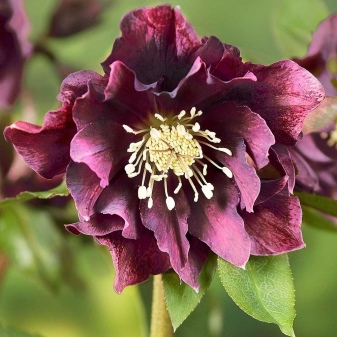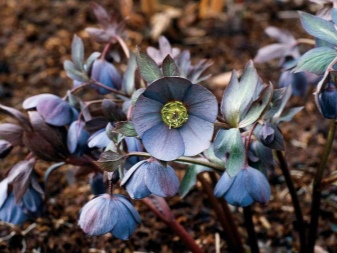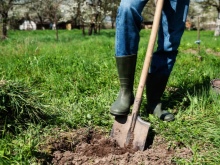Eastern hellebore: description and varieties, planting and care

The vast majority of crops can only bloom during the warm season of the year. However, the eastern hellebore is an exception. You just need to know the basic subtleties of handling it - and then even in winter you can enjoy the flowering of this culture.


Peculiarities
Oriental hellebore by biologists has been assigned to the buttercup family; the hellebore genus includes 14 more species, but they are less popular. The demand for the species among gardeners is due to a wide variety of colors. Along with the "pure" oriental hellebore, its hybrids are actively used.
The very name "hellebore" is due to the fact that in regions with mild winters, the plant begins to bloom in February. This is most often seen in the Balkans and in the Caucasus region.


Plant height cannot be more than 0.3 m. The demand for the eastern hellebore is associated with such advantages as:
- long-term development;
- frost resistance during flowering;
- the possibility of wintering without shelter;
- the ability to grow a crop for many years in one place.
In the middle zone of our country, the eastern hellebore gives flowers already in the twenties of March. Even when it snows and the air cools down to -5 ... 6 degrees, flowering will continue without the slightest consequences. The flowers of the eastern hellebore have an unusual configuration. Important: what most people think of as a flower is actually a sepal. The real hellebore flower is so modest that they simply do not pay attention to it.


Varietal variety
Thanks to the success of breeding work, it was possible to obtain a lot of varieties of varietal and hybrid hellebores. They are characterized by clean and bright colors, as well as a rather large flower size - it can reach 0.08 m.
Popular varieties:
- "Blue anemone" - with delicate purple flowers;
- "White Swan" - white;
- "Rock and Roll" - has a dark speck.


German breeders managed to create an interesting series "Lady"; the name of each variety contains this generic name. Among them there are:
- pink with red spots;
- light pink;
- white with red dots;
- dark red;
- creamy lemon plants.
All representatives of the "Lady" series are quite high - up to 0.4 m. In the temperate climatic zone, they bloom in mid-April. Flowering lasts approximately 2 weeks. A characteristic feature of this group of plants is excellent seed reproduction.


The Montsegur variety is also attractive. Its flowers can grow to a large size, and in shape they resemble a bowl. A characteristic feature of the variety is increased color variability. In the middle of the flower, it is easy to see the stamens of a contrasting color. The height of "Montsegura" can reach 0.3-0.4 m. With the onset of spring, a lush inflorescence of a spreading appearance is formed, rising 0.5 m above the ground. The diameter of the flowers varies from 0.03 to 0.05 m. Flowering can be observed in March, April and May. The variety is characterized by leathery foliage of the finger-dissected type. In one place, a culture can develop up to 10 years. It is very difficult to transplant it, therefore you have to choose a place very carefully and work thoroughly.
The Tricastin variety also deserves attention. The length of its flowering stems varies from 0.2 to 0.5 m. The flower cups are large and variably colored. This variety has many petals, but each of them is relatively small. The plant looks graceful in a bouquet.


Connoisseurs appreciate and grade "Double epricot"... The height of its plants is 0.3-0.4 m; cultivation in the 5th climatic zone is recommended. The crop is suitable for cutting. It is advisable to grow it in the shade or partial shade. Double Epicot looks most beautiful at sunset.
It is appropriate to end the review at "Double Helen Pikoti"... The variety gives double flowers of white-pink color with a diameter of up to 0.08 m. They are covered with thick red-burgundy lines starting from the middle. Flowering continues for quite a long time. Demanding soil is not great, but it is better to choose areas with heavy clay, saturated with humus.


How to plant?
When choosing a place to plant a hellebore, you need to give preference to areas shaded by trees or shrubs. Landing in well-lit or very dark places is possible, but rarely gives a good result. Eastern hellebore responds well to planting in clay soil with a neutral reaction. Humidity should be moderate - both excessive moisture and desiccation are contraindicated. It is necessary to expect seedlings when sowing seeds for next spring. When 2 or 3 full-fledged leaves appear, the seedlings will have to dive. The hellebore can be transplanted to a permanent place with a gap of 0.15-0.2 m between individual seedlings.
Important: it is not recommended to store seeds for a long time - it is better to use them as soon as possible. Hellebore propagation by division occurs in early spring; an adult plant is divided into 2 or 3 parts. All plots for a new landing are thoroughly dug up. In some cases, lime is added to compensate for the excessive acidity of the earth. The diameter of the holes is about 0.3 m. A gap of about 0.4 m is left between the holes. The newly planted hellebore must be thoroughly watered; water it systematically in the first days after planting.



How to care?
Caring for this plant will not cause any particular difficulties. After the end of flowering, all weeds are pulled out. The soil around the culture is thoroughly mulched using compost or peat. It is advised to mix crushed eggshells with peat. Active watering is almost unnecessary if the weather is good.
You can fight aphids with the help of special preparations. Slugs and snails are collected by hand and burned. Fungus damage is likely against the background of a damp warm summer. All affected parts of the hellebore will have to be cut out to the very root.
Prevention of fungal resurgence involves the use of systemic fungicides.


In the next video, planting, care, cultivation and reproduction of the hellebore awaits you.







































































































The comment was sent successfully.